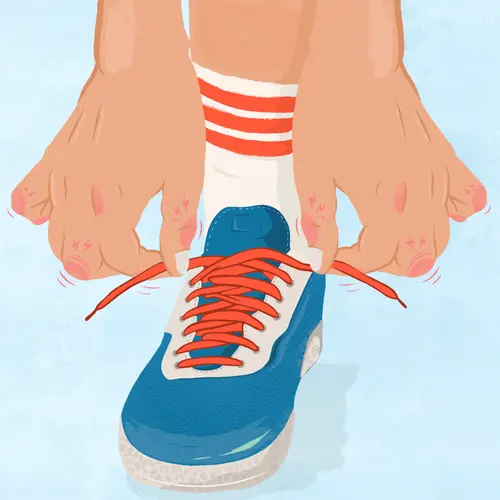When to See Your Doctor in Person
You can do some doctor’s appointments, like routine checkups and consultations, through telemedicine. But others, like lab appointments and urgent care, must be done in person.
Your doctor may want to see you in person if you have symptoms like:
- An acute RA flare
- Back pain
- Bloody diarrhea
- High fever, over 102 F
- Hot, swollen joints
- Joint aspiration or injection
- Lack of blood flow to your limbs
- New trauma or fracture
- Serious side effects from medication
- Vision problems
If you have a hard time breathing or swallowing, seizures, or symptoms of a stroke or heart attack, you should call your doctor or 911 right away.
New Safety Measures for Social Distancing
Many practices and medical centers now have new safety protocols in place to deliver safe health care while maintaining social distancing. These may include:
- Doctors and staff wear personal protective equipment like masks, gloves, and face shields.
- The staff deep cleans more often and between patients.
- Physical contact is kept to a minimum.
- They limit how many patients are in the office at any time.
- You fill out paperwork at home, before your visit.
- The staff screens all patients for COVID-19 symptoms.
Get Ready for Your Doctor Visit
Call before you make an in-person visit to a lab or doctor’s office. Find out what their safety procedures are. Ask questions like these:
- What are your safety measures?
- What are the building’s safety measures?
- How often do you sanitize common areas and exam rooms?
- How many patients are allowed in the office at once?
- Can I wait in my car instead of a waiting room?
- If you use a waiting room, is it set up for social distancing, with chairs 6 feet apart?
- Is your staff required to wear safety gear?
- Do you screen patients for COVID-19 symptoms before they enter?
- Are patients required to wear a mask?
The staff may ask you to fill out paperwork before your appointment. They may send an online link to regular forms and a questionnaire about coronavirus symptoms and whether you may have been exposed to the virus.
If you have symptoms of COVID-19, like a fever, coughing, or shortness of breath, stay home and tell your doctor.
When You Get to Your Doctor’s Office
The check-in process at your doctor’s office may be different than it was before the coronavirus pandemic.
You may wait in your car instead of a waiting room. The staff will call or text you when it’s your turn to see the doctor.
Someone may screen you for the coronavirus before you enter. The office staff may take your temperature and ask you if you’ve had symptoms of the coronavirus in the last 14 days.
During Your Appointment
There are steps you can take to protect yourself at the doctor’s office, lab, or emergency room. Try these safety tips:
- Wear a mask or face covering.
- Use social distancing. Stay 6 feet away from other people.
- Bring a hand sanitizer with at least 60% alcohol.
- Use hand sanitizer after you touch surfaces like doorknobs or handles.
- Bring disinfecting wipes. Clean your phone or other items you touch.
- Don’t touch other people if you can avoid it. Hold off on shaking hands, fist bumps, and hugs. It’s better to wave or nod your head to say hello.
- If you sneeze or cough, cover your mouth. It’s best to do it into a clean tissue, then throw the tissue away.
After your visit, use hand sanitizer with at least 60% alcohol. Wipe down your car keys and steering wheel with a disinfecting wipe.
When you get home, wash your hands with soap and water. Do it for at least 20 seconds.
Don’t Delay if It’s an Emergency
If you have an emergency, go to the ER. Hospitals have extra safety measures to protect you from exposure to COVID-19.
Go to the hospital right away if you have symptoms like:
- Severe chest pain
- Shortness of breath
- Weakness on one side
- Inability to speak clearly
They’re signs of a heart attack or stroke, which need medical care right away.
If you’re not sure how urgent it is, like if you have a high fever, call your doctor. They can tell you if it’s best to go to a rheumatology clinic or the hospital.

